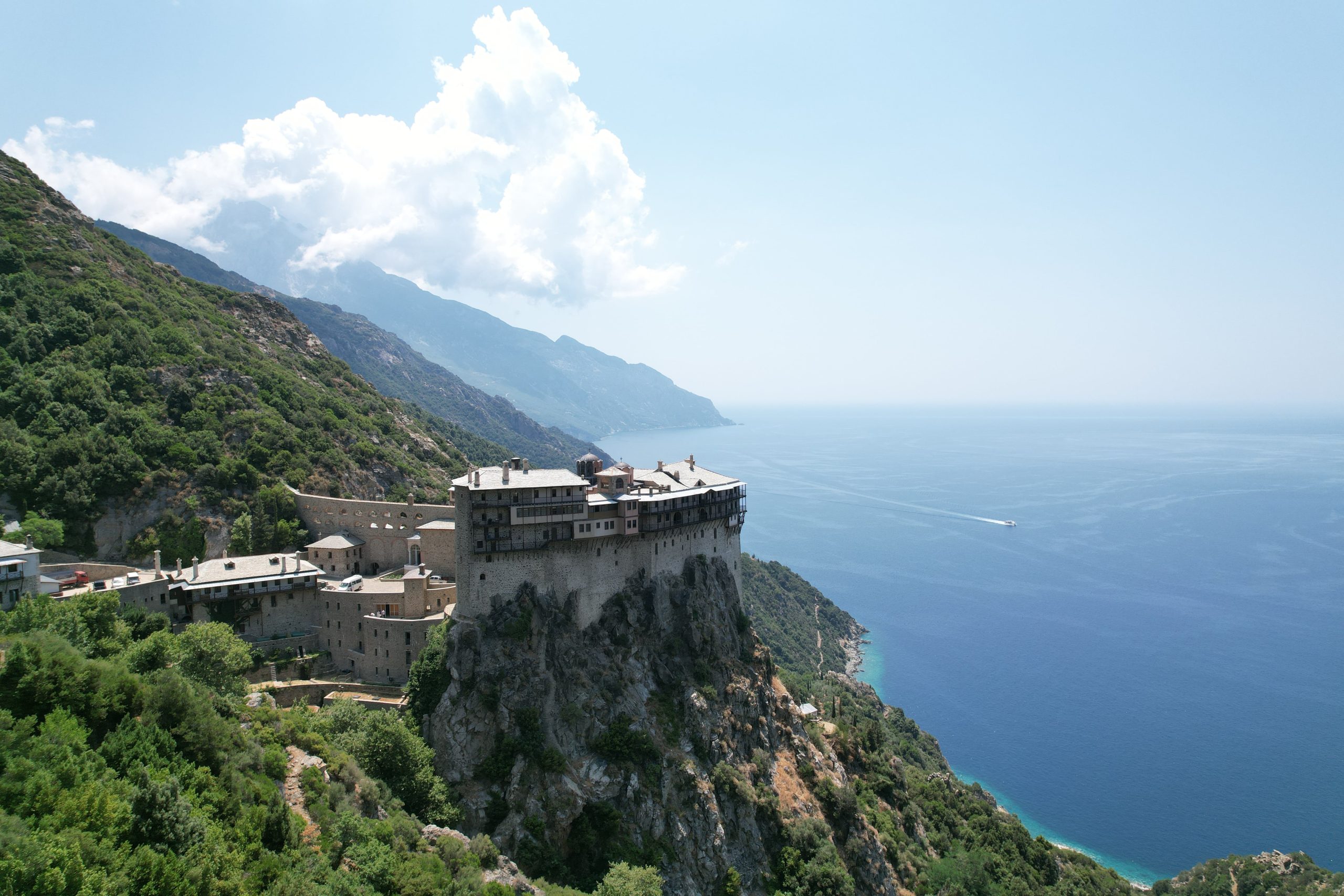
The seven-storey Simonopetra Monastery is the most daring construction on Mount Athos. It is built on a steep rock on the southwest side of the peninsula and is dedicated to the Nativity of Christ. It is named after its founder, Saint Simon. It ranks thirteenth in the hierarchy of the Athonite monasteries. At the end of the 16th century, and in particular in 1580, the monastery was entirely destroyed by fire except for the katholikon and the sacristy; it was rebuilt and burned down again at the beginning of the 17th century, in 1622. At the end of the 19th century, in 1891, the monastery was once again destroyed by fire and was restored with funds from Russia. At that time, the katholikon was also renovated, at the domes of which frescoes from the 17th century were recently revealed. The monastery has 15 chapels, six cells in Karyes as well as five kathismata in the area surrounding the monastery. The arsanas complex includes a 16th-century four-storey defence tower, with a cell and storage facilities.
The seven-storey Simonopetra Monastery is the most daring construction on Mount Athos. It is built on a steep rock on the southwest side of the peninsula and is dedicated to the Nativity of Christ. It is named after its founder, Saint Simon. It ranks thirteenth in the hierarchy of the Athonite monasteries.
The expansion of the building complex was carried out with the help of the Serbian despot John Uglesha, who issued a ktetoric chrysobull in 1368, endowing it with metochia and heirlooms.
At the end of the 16th century, and in particular in 1580, the monastery was entirely destroyed by fire except for the katholikon and the sacristy; it was rebuilt and burned down again at the beginning of the 17th century, in 1622. A period of decline followed, interrupted by brief periods of recovery. During the Greek War of Independence it was deserted; from 1822 and for the next six years. The southwest wing was added in 1864 during the abbotship of Neophytos, and at the beginning of the 20th century, the construction of the eastern wing was completed. At the end of the 19th century, in 1891, the monastery was once again destroyed by fire and was restored with funds from Russia. At that time, the katholikon was also renovated, at the domes of which frescoes from the 17th century were recently revealed. The monastery has 15 chapels, six cells (kellia) in Karyes as well as five retreats (kathismata) in the area surrounding the monastery.
The Monastery is roughly irregular in form with a confined courtyard dominated by the katholikon. The holy Monastery of Simonos Petras is distinguished for its full development of height growth and several floors. The eastern wing of the Monastery is an independent building of seven, eight and nine floors. The four upper floors have wooden balconies. It was constructed between 1897 and 1902. The western wing includes part of the katholikon and its bell tower. The northern wing includes the stone-paved entrance, which was constructed in 1859. The southern wing consists of seven floors and dates back to 1864. The central wing is the oldest wing of the Monastery, dating back to the 16th century. It includes the refectory, chapels and monastic cells.
The arsanas (port) complex includes a 16th-century four-storey defence tower, with a cell and storage facilities.
As far as relics are concerned, the monastery holds a piece of the True Cross, relics of saints and various other heirlooms. The library was particularly significant and contained about 250 manuscripts published by Spyridon Lambros, which perished in the fire of 1891.
Athanasios Nakos
Address: Konstantinoupoleos 5,
631 00 Polygyros Halkidiki
Phone: +30 23710 22060
Fax: +30 2310 251892
Mount Athos Technical Office
Address: 7 Hippodrome Square, Thessaloniki
Phone: +30 2310 285163
Fax: +30 2310 251892
E-mail: [email protected]
